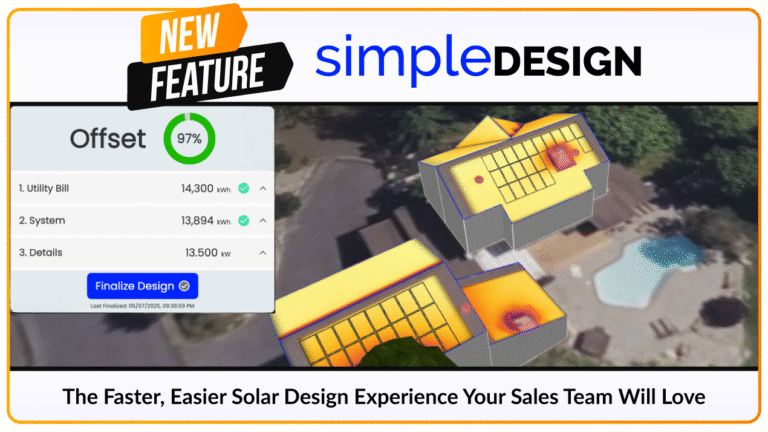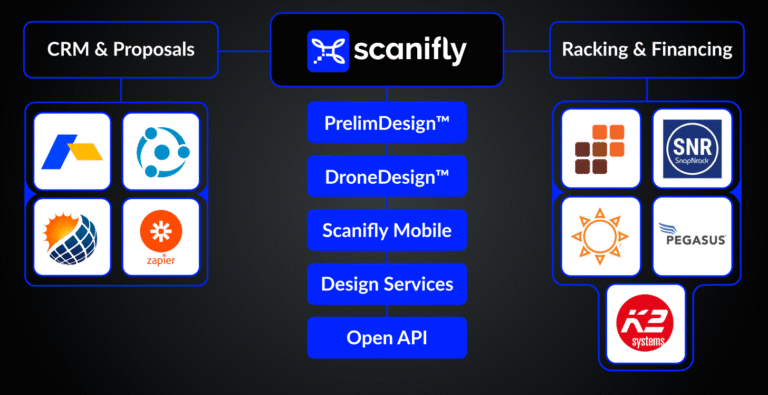Like it or not, a Sales Rep’s reputation is tied to its operations partner.
After a Rep closes a deal, it is passed to an engineer, procurement and construction organization (EPC) or those related departments at a turnkey installer (a.k.a. “Ops”). These individuals are responsible for executing the project to commissioning (Proceed to Operate, or PTO).
That’s when things can change and differ from what was sold upon contract signing.
But whose fault is it?!
How Reps always get blamed
When Ops takes over from Sales Reps, multiple issues can occur that change the economics, capacity, and appearance of the solar array.
Here are a few examples.
-
Incorrect measurements could result in a different number of panels on the final system. Adding panels to match offset increases the project cost; a decrease can mean a higher than expected utility bill.
-
Incorrect or missing shade analysis could lead to a reduction in overall production from issues like missing a tree in an initial layout, improperly defining a tree’s height, or not including surrounding buildings.
-
Missing roof obstructions could result in removing panels in the middle of an array, creating a visually unappealing look — a “broken smile” effect.
-
Revisions and true-ups cause delays, sometimes knocking a project back by weeks if installation teams are booked (which is often the case given the talent crunch in solar).
-
Broken promises around production guarantees will lead to immediate frustration—and likely delays as you renegotiate with homeowners.
Ultimately, these issues anger homeowners—who often blame their Reps, even though most problems stem from operational problems post-sale.
Project Managers may step in if things get really bad, but homeowners may still advise their neighbors against working with that Rep in the future.
Operations is actually everyone’s problem
A bad customer experience hurts Reps in the short-term, but everyone loses in the long-term.
-
Contractors and EPCs may develop a negative reputation that can take years to fix, even if you address the operational problems today. They could also have delayed milestone payments, hurting their working capital and ability to operate.
-
Sales reps aren’t paid commissions or delayed and different than expected.
-
Top sales talent may choose to leave for a competitor, leaving remaining team members with even less revenue and growth.
-
All teams may lose resources due to cuts or layoffs if Reps can’t close deals.
On the flip side, a satisfied customer is the single best marketing asset a solar business can have—few things beat a good referral.
4 ops practices that make Reps look like heroes

If you want to preserve your reputation—and ability to sell—you need more transparent and accurate operations that usher a project from a sold deal to PTO as quickly as possible, with the fewest revisions possible.
1. High-quality prelim designs
Start with a thorough, conservative remote design. To avoid the “garbage in, garbage out” problem, don’t use outdated satellite data.
Instead, check multiple remote imagery types (e.g. Bing, Google Maps, Mapbox, and others) and choose the most recent data source. You can also pay a small premium for recent airplane data from Nearmaps or layer Google3D and Light Detection and Ranging (LiDAR) data.
2. Leverage drones for on-site data
For some projects, a better process could be flying a drone to collect on-site data during the initial or closing sales visit, depending on a Rep’s sales approach.
If a Sales Rep doesn’t do it at closing, then the immediate next step can be a drone-based site survey.
3. Keep your platform consistent
Using the same platform from preliminary to final design also helps streamline operations. This minimizes data loss and keeps all project information centralized for easy reference and without missing any details.
4. Transparent customer communication
Finally, explain the entire process to customers up front—the remote design is just preliminary, the team will come on-site to finalize everything, and installation will progress based on permits and scheduling availability.
This can come from Project Managers, which helps avoid bogging down Reps. Contractors also write detailed “Project Process” pages on their websites or make videos explaining each step in the process.
Technology makes collaboration easier

The key to delivering high-quality experiences is through accuracy and speed. All of this is made easier with an investment in technology.
Just ask the multiple Contractors who saw increased fitment, eliminated revisions, and faster project timelines after bringing new tech into their processes.
While bringing new technology into workflows is primarily an operations challenge, Sales can advocate for improvements and collaborate with Ops to make the entire project more transparent. The result is a better experience for customers that protects Contractor reputation and drives future sales.







